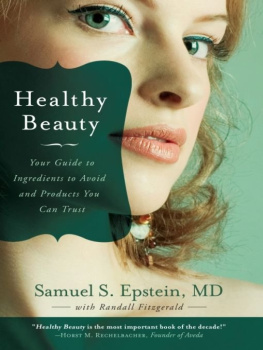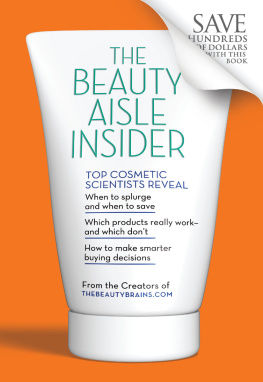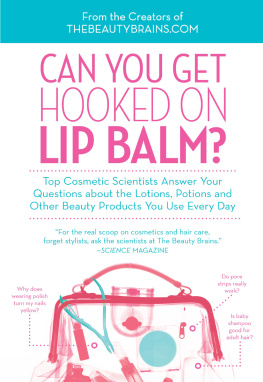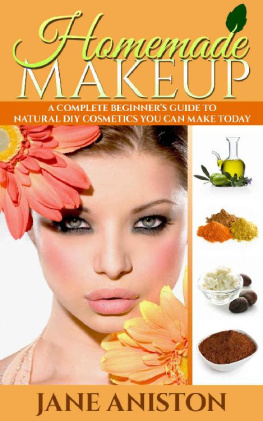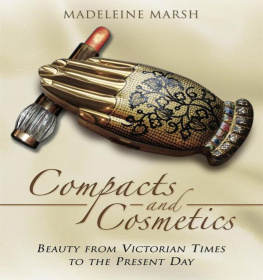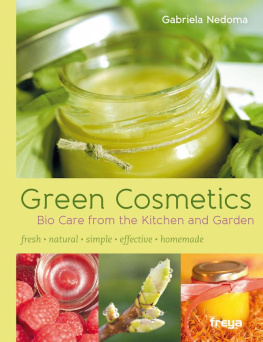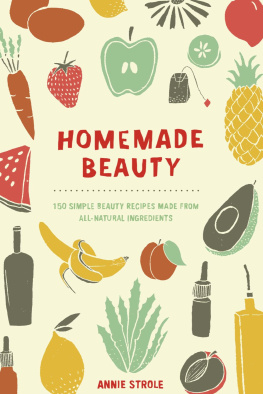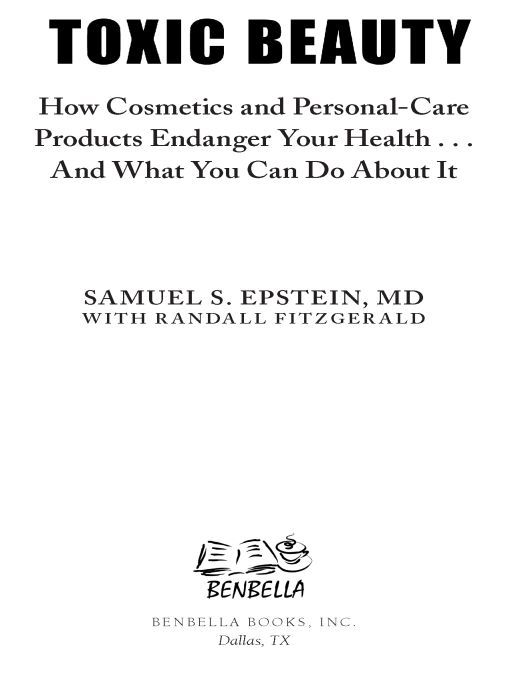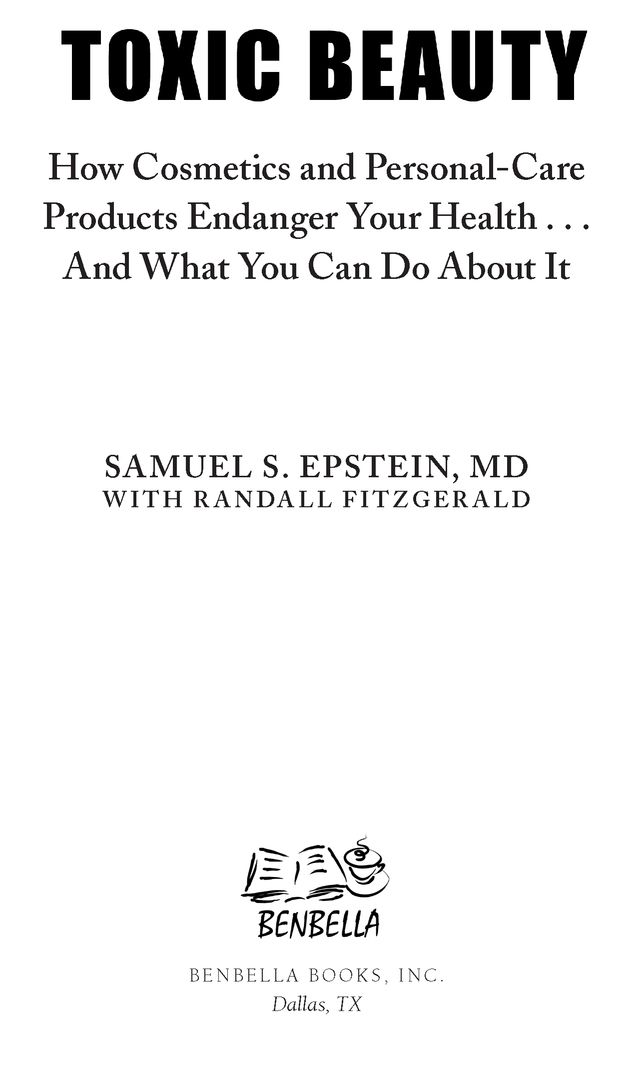Table of Contents
Praise for Toxic Beauty
Most American women have no clue that the rugged individual model held up for emulation includes placing the responsibility for ones health and safety squarely on the consumers shoulder! When it come to cosmetics, each woman is on her own in judging safety of products with no meaningful information from the producer and no aid from government watch-dogs. The research, if done at all, can be withheld by the company. Dr. Samuel Epstein is the first to speak out on this Toxic Beauty product hazard, and to give women some guidelines for meaningful protective action. It is a must-read for all those who care about public health!
DR. ROSALIE BERTELL
Toxic Beauty is the most important book of the decade. As a medical doctor, Sam Epstein clearly understands the causes of diseases such as cancer, diabetes, and other inflammatory diseases through the exposure to petrochemical and synthetic toxins found in everyday consumer products. This book is a transparent truth of the consumer industry. It is a must-read for everyone.
HORST M. RECHELBACHER, founder of Aveda
If you are a woman Toxic Beauty is a guide that is crucial for your library. It is loaded with practical tools and resources to help you navigate the surprising and shockingly toxic secrets of the personal care products industry, and help you preserve your good health while maintaining or improving your beauty.
DR. MERCOLA, founder of Mercola.com, most visited natural health site in the world
Other Books by Samuel S. Epstein, MD
The Mutagenicity of Pesticides (1971)
Drugs of Abuse: Their Genetic and Other Chronic Nonpsychiatric Hazards (1971)
The Legislation of Product Safety: Consumer Health and Product Hazards (1974)
The Politics of Cancer (1978)
Hazardous Wastes in America (1982)
Cancer in Britain: The Politics of Prevention (1983)
The Safe Shoppers Bible (1995)
The Breast Cancer Prevention Program (1998)
The Politics of Cancer, Revisited (1998)
Unreasonable Risk: How to Avoid Cancer and Other Toxic Effects from Cosmetics and Personal Care Products: The Neways Story (2001; Second Edition, 2005)
GOT (genetically engineered) MILK! The Monsanto rBGH/BST Milk Wars Handbook (2001)
The Stop Cancer Before It Starts Campaign: How to Win the Losing War Against Cancer (2003)
Cancer-Gate: How to Win the Losing Cancer War (2005)
Shopper Beware: How to Avoid Cancer and Other Toxic Effects from Cosmetics and Personal Care Products (Japan, 2006)
Whats In Your Milk? (2006)
Other Books by Randall Fitzgerald
The Hundred Year Lie: How Food and Medicine are Destroying Your Health (2006)
To my wondrous wife Catherine, who has made all things possible.
FOREWORD
To varying degrees, the American public, as well as that of other nations, is exposed to carcinogenic and other toxic pollutants in air, water, and the workplace. At least minimally, these exposures are all subject to explicit federal regulation.
Nevertheless, the entire American public remains exposed to carcinogenic and other toxic ingredients in consumer productshousehold, food, cosmetics, and personal care. While todays consumers increasingly want to make informed shopping decisions, nearly all are still doing so in the dark. They receive highly misleading information from the industries involved, while the Food and Drug Administration (FDA), the supposedly responsible regulatory agency, remains recklessly silent.
Of particular concern are cosmetics and personal-care products. These are regulated under the 1938 FDA Federal Food, Drug, and Cosmetic Act, which requires that all ingredients in these products must be labeled on their containers. The Act also gives the FDA authority to protect consumers from dangerous products, including requiring that their labels must bear a clear warning statement to prevent any health hazard. However, seven decades after the Act was passed, the FDA still takes the reckless position that the industry is responsible and accountable for the safety of its products. Accordingly, the FDA fails to regulate the industry, let alone warn the public of the dangers of its products. Its no wonder that, at the 1997 hearings on the FDA Reform Bill, Senator Edward Kennedy warned that, The cosmetics industry has borrowed a page from the playbook of the tobacco industry by putting profits ahead of public health.
In reader-friendly language and with meticulous scientific documentation, Dr. Epstein details the wide range of toxic ingredients in currently marketed cosmetics and personal-care products along with those ingredients effects. The ingredients fall into five categories, and are listed in five tables: frank carcinogens, hidden carcinogens (carcinogens that contaminate other ingredients, or ingredients that are precursors of carcinogens), endocrine disruptors (ingredients that are hormonally toxic, particularly to women and their fetuses), penetrating agents (ingredients that pass through the skin), and allergens. Other tables list the toxic ingredients in a wide range of common products.
Fortunately, Toxic Beauty is not a gloom and doom book. Also listed are safe alternative products, including those that are certified organic. Concerned and responsible shoppers can readily download the books five tables on toxic ingredients from the authors Cancer Prevention Coalition Web site, www.preventcancer.com, or from NaturalNews.com. They can then use these tables while shopping to avoid buying products with toxic ingredients.
Dr. Epstein is well recognized as a leading international expert and crusader on avoidable causes of cancer and other life-threatening diseases. I have known him well for more than two decades, and have endorsed his critical initiatives in protecting our health and lives.
The importance of the information in this book cannot be overstated. Toxic Beauty is a must-read for all concerned citizens.
Quentin D. Young, M.D.
Chairman, Health and Medicine Policy Research Group, Chicago
Past President, American Public Health Association
INTRODUCTION
Why Youre at Risk
If youre a woman reading this book, you have a one in eight chance of getting breast cancer during your lifetime. You probably already know someone from your family, or from your circle of friends and acquaintances, who has battled this disease and lost, if not her life, then pieces of her body. The psychological toll alone from breast cancer and chemotherapy can be devastating, and anything designed to help relieve the pain, the suffering, and the self-image concerns would normally seem a godsend.
When it comes to our health and the knowledge we need to influence it, even the best of intentions can go awry and exact the cruelest consequences. When the Look Good... Feel Better program began in 1989, it had the noble-sounding goal of teaching breast cancer patients techniques to help restore their appearance and self-image during and following their treatment. Established by the Cosmetic, Toiletry, and Fragrance Association (the U.S. trade association later renamed the Personal Care Products Council), along with the National Cosmetology Association, the program gives away more than 1 million cosmetics and personal-care products each year to about 30,000 breast cancer patients. Further adding to the programs aura of legitimacy, it is administered nationwide by the non-profit American Cancer Society (ACS), which trains volunteers and acts as the scientific authority endorsing the program and its products.


